Overview
This article highlights effective strategies for wineries aiming to boost direct-to-consumer (DTC) sales through optimized fulfillment processes. Understanding market dynamics and consumer preferences is crucial in this endeavor. By leveraging technology, wineries can enhance their operations, ultimately driving growth and customer satisfaction within the competitive East Coast wine market. The insights presented here not only establish expertise but also provide actionable steps that can lead to significant improvements in sales performance.
Introduction
The East Coast wine industry is undergoing a significant transformation, fueled by shifting consumer preferences and a growing demand for sustainable practices. Wineries aiming to harness this momentum must adeptly navigate a multifaceted landscape of market dynamics, regulatory hurdles, and competitive pressures.
How can they effectively enhance their direct-to-consumer (DTC) sales while ensuring operational efficiency and customer satisfaction?
This guide explores strategic steps that wineries can adopt to master East Coast wine fulfillment, elevate their DTC sales, and cultivate long-term growth in an ever-evolving environment.
Understand the East Coast Wine Fulfillment Landscape
To effectively boost DTC sales, wineries must first comprehend the east coast wine fulfillment landscape. This includes:
- Market Dynamics: The East Coast has experienced a rise in beverage production, with states like Virginia and New York becoming notable contributors. Familiarize yourself with local trends, such as the increasing interest in sustainable and organic beverages. Significantly, organic beverage sales increased by 2.6% from the previous year in 2024, indicating a wider transition towards eco-friendly consumption. Enocap's expertise in creating sustainable direct-to-consumer channels can assist vineyards in capitalizing on these trends and fostering consistent growth.
- Regulatory Environment: Each state has its own laws regarding wine shipping and sales. Investigate the specific regulations that pertain to your establishment, including licensing requirements and shipping restrictions, to ensure compliance and smooth operations. Enocap can assist in navigating these complexities, ensuring that wineries are well-prepared to meet regulatory demands.
- Consumer Preferences: Analyze the demographics of your target market. East Coast consumers may have different preferences compared to those on the West Coast, often favoring local beverages and unique varietals. For instance, 60% of multicultural consumers aged 20 to 40 prefer wines that are organic, green, or certified sustainable. Utilize market research to tailor your offerings accordingly, enhancing customer engagement and satisfaction. Enocap's strategic planning can transform casual buyers into loyal club members through proven strategies.
- Competitive Landscape: Identify your competitors in the region. Understanding their strengths and weaknesses can help you position your establishment effectively in the market. Wineries that have successfully adopted are likely to resonate more with today's environmentally conscious consumers. The New York Sustainable Winegrowing program, introduced in 2023, illustrates an initiative that promotes sustainable methods in the area, and the sustainability trustmark indicates a vineyard's dedication to responsible wine production. Enocap's market intelligence can provide insights that enhance your competitive edge.
By understanding these components, wineries can establish a strategic base for their DTC revenue initiatives, ensuring they are well-equipped to apply effective fulfillment strategies, including east coast wine fulfillment, that improve cash flow and promote long-term growth.
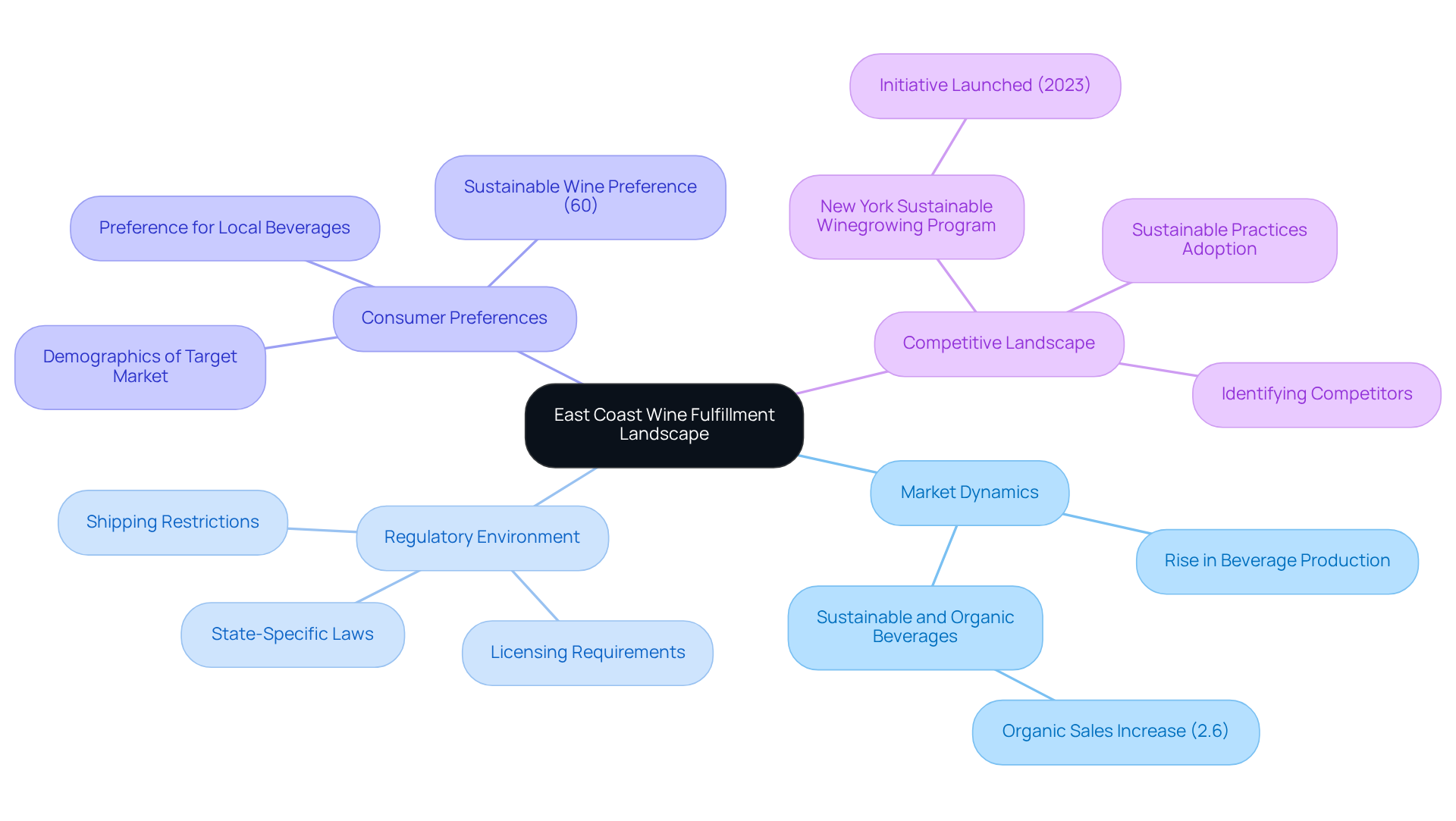
Evaluate Your Current Fulfillment Operations
To optimize your fulfillment operations and enhance direct-to-consumer (DTC) sales, consider the following steps:
- Assess Your Inventory Management: Evaluate your inventory tracking methods. Are you relying on manual processes, or do you utilize an automated inventory management system? Implementing software that integrates seamlessly with your sales channels can provide real-time tracking and improve accuracy, which is essential for building sustainable DTC channels that drive consistent growth and unlock direct-to-consumer revenue.
- Analyze Order Processing Times: Measure the duration from order placement to delivery. Identify bottlenecks, such as slow packing or shipping delays, and explore strategies to streamline these operations. Effective order processing is essential in east coast wine fulfillment, as transportation constitutes around 70% of supply chain expenses in the beverage sector. By converting casual purchasers into devoted club members through enhanced service, you can boost loyalty and create a seamless experience that honors the art of wine.
- Evaluate Shipping Partners: Review the performance of your current shipping partners. Are they consistently meeting delivery timelines? Assess their rates for competitiveness. Expanding your shipping choices can enhance service quality and lower expenses, ultimately boosting client satisfaction. This aligns with the strategic capital planning necessary for family wineries to thrive.
- Collect Client Feedback: Actively seek input from clients regarding their fulfillment experiences. Identify common complaints or suggestions to inform targeted improvements. A customer-centric approach can significantly enhance brand loyalty and retention. As Rahul Dev pointed out, "This is not merely about transporting bottles more quickly; it’s about crafting a smooth, customer-focused experience that honors the craft of beverages and fosters enduring brand loyalty."
- Benchmark Against Competitors: Compare your fulfillment operations with those of successful competitors. Identify best practices that can be adopted to enhance your processes. Wineries that invest in and enhancing their east coast wine fulfillment are better positioned for success in the evolving wine industry. For instance, Wineshipping's approach to inventory consolidation demonstrates effective strategies that can be emulated.
By thoroughly assessing these aspects of your operations, you can identify specific areas for enhancement, ultimately increasing your DTC revenue potential and ensuring your winery flourishes for generations.
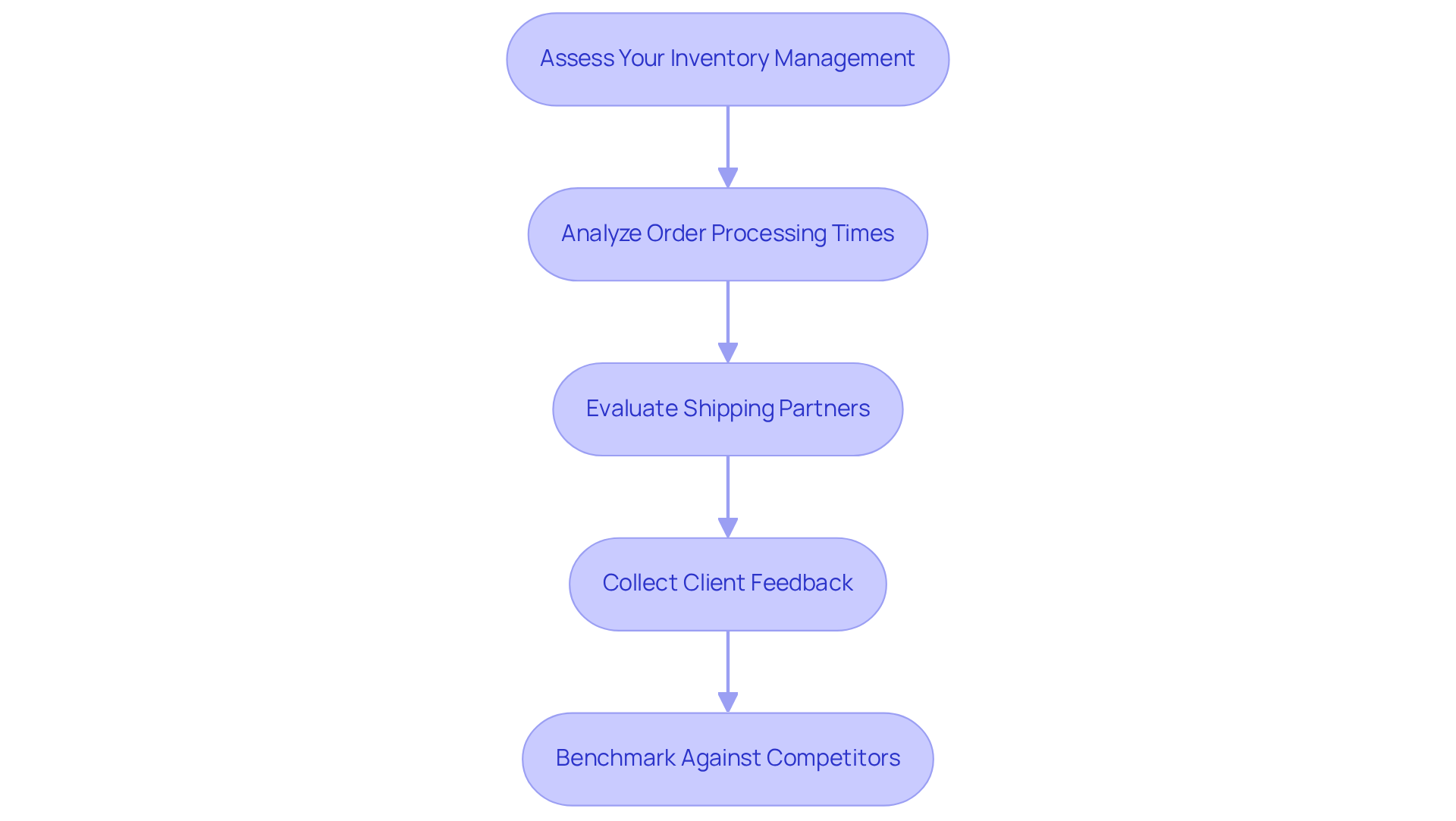
Implement Direct-to-Consumer Sales Strategies
To implement effective direct-to-consumer (DTC) sales strategies, it is essential to consider the following steps:
- Enhance Your Online Presence: Invest in a user-friendly website that not only showcases your products but also tells your brand story and facilitates online purchases. Given that many consumers shop via smartphones, ensure that your site is optimized for mobile devices. Incorporate clear calls to action (CTAs) to guide visitors towards making purchases.
- Leverage Social Media: Engage with your audience on social media platforms to share your story and promote your wines. Tailor your content to specific audience segments, understanding their expectations and online habits. Running targeted advertisements can assist in reaching potential clients in your area, capitalizing on the fact that nearly 90% of global consumers utilize social media to stay informed about cultural trends.
- Create Compelling Content: Develop engaging content that resonates with your audience. This could include blog posts about your winemaking process, videos showcasing your vineyard, or newsletters featuring exclusive offers. High-quality visuals, such as vineyard footage and behind-the-scenes clips, can captivate viewers and enhance your storytelling. Furthermore, utilize user-generated content by sharing client experiences and testimonials to build credibility and encourage engagement.
- Host Virtual Tastings: Arrange virtual beverage tastings to connect directly with consumers. This initiative not only enhances your beverages but also fosters a sense of community among your clientele, making them feel more connected to your brand.
- Utilize Email Marketing: Build an and send regular updates to your subscribers. Include promotions, new releases, and personalized recommendations based on their purchase history. Emphasizing the importance of maintaining engagement through these regular updates is crucial, as email marketing remains a vital strategy for keeping your audience informed and connected.
- Offer Exclusive Memberships: Establish a club that provides unique advantages, such as early access to new releases, discounts, and members-only events. This strategy fosters loyalty and encourages repeat purchases, as consumers increasingly seek brands that offer unique experiences. Proven strategies can transform casual buyers into loyal club members, driving consistent growth.
- Prioritize Online Security: As DTC beverage commerce expands, improving online safety is essential to safeguard client information and uphold trust. Implement robust security measures to protect transactions and reassure clients about the safety of their information.
By applying these DTC sales strategies, wineries can effectively connect with consumers, boost sales, and develop a loyal customer base, ensuring sustainable growth in the competitive beverage industry.
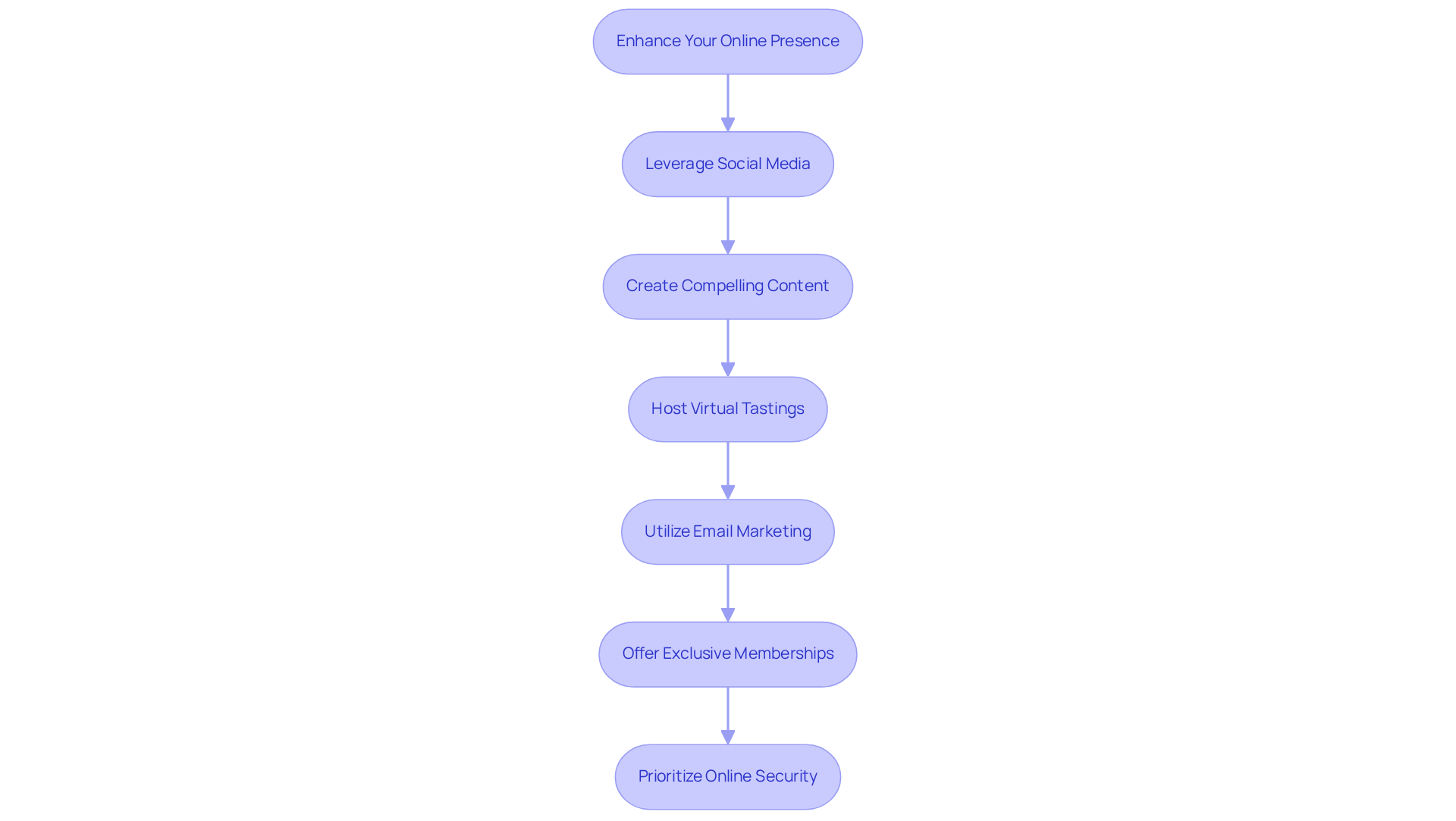
Optimize Wine Club Memberships for Retention
To enhance wine club memberships for improved retention, it is essential to implement that resonate with your audience.
- Personalize Member Experiences: Leverage data to customize experiences for your members. This includes tailored beverage recommendations based on individual preferences or exclusive offers on their favored selections, fostering a deeper connection. Enocap's strategic capital advisory services can assist you in investing in the right tools to effectively gather and analyze this data.
- Engage with Exclusive Content: Deliver unique content such as behind-the-scenes videos, winemaker interviews, or early access to new releases. This not only cultivates a sense of belonging but also keeps members actively engaged with your brand. Enocap can help in crafting compelling brand stories that resonate with your audience.
- Host Member-Only Events: Organize exclusive gatherings for wine club members, including private tastings, vineyard tours, or special dinners. These unique experiences significantly strengthen their connection with your establishment. Enocap's expertise in strategic capital planning can aid in effectively funding these initiatives.
- Implement a Referral Program: Motivate existing members to refer friends by offering incentives such as discounts or free shipping on their next order. This strategy not only expands your membership base but also rewards loyal customers. Enocap can provide insights into optimizing your referral programs to maximize impact.
- Regularly Review Membership Benefits: Continuously evaluate the benefits you provide to ensure they remain appealing to your members. Actively seek feedback to understand what they value most and identify areas for improvement. Enocap's strategic advisory services can guide you in refining these benefits to align with member expectations.
By prioritizing these strategies, vineyards can significantly enhance member satisfaction and retention, ultimately driving sustainable growth through their wine clubs. Research indicates that enhancing member experiences can lead to retention improvements of 18-24%, underscoring the importance of personalization and engagement in today’s competitive market.
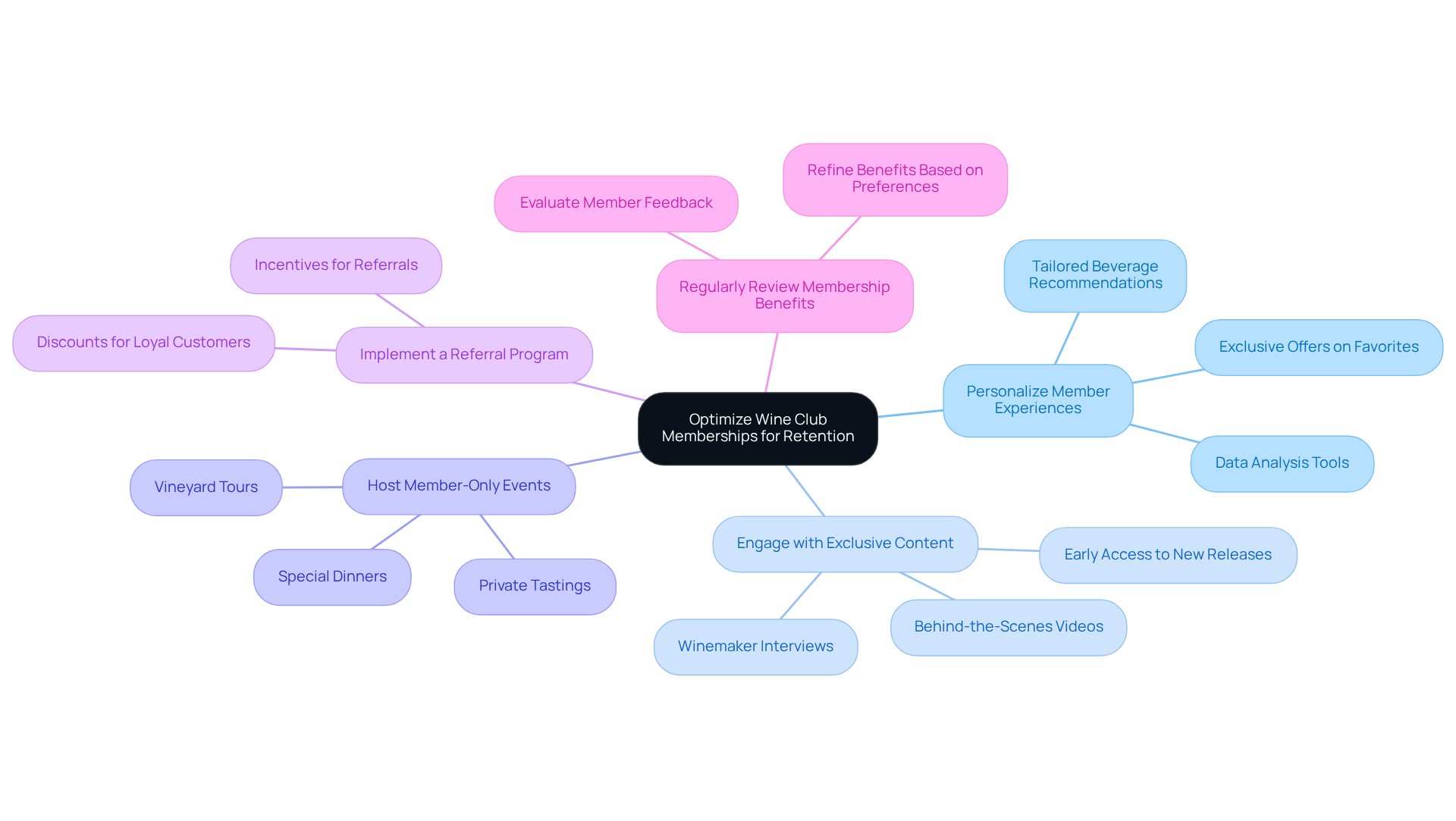
Leverage Technology for Streamlined Fulfillment
To optimize fulfillment processes and enhance , wineries must adopt strategic measures that drive efficiency and customer satisfaction.
- Invest in a Robust Fulfillment Software: Selecting a fulfillment software that seamlessly integrates with your e-commerce platform is crucial. This integration enables real-time inventory tracking, efficient order management, and automated shipping processes, ensuring smooth operations that can scale with your business.
- Utilize Data Analytics: Leveraging advanced data analytics tools provides valuable insights into client behavior, revenue trends, and inventory levels. In 2025, wineries utilizing data analytics reported a significant increase in sales efficiency, with many achieving up to 191% growth in e-commerce sales. This data-driven approach facilitates informed decision-making regarding stock levels and targeted marketing strategies.
- Automate Order Processing: Implementing automation tools to streamline the entire order processing workflow—from picking and packing to shipping—can drastically reduce processing times and minimize human error. Such enhancements lead to improved operational efficiency, positioning wineries to meet consumer demands effectively.
- Implement a Client Relationship Management (CRM) System: A robust CRM system is essential for managing client interactions, tracking orders, and personalizing communications. This system not only enhances the overall customer experience but also fosters loyalty, a critical factor in a competitive market.
- Explore Third-Party Logistics (3PL) Solutions: Partnering with a 3PL provider specializing in wine fulfillment can transform your operational capabilities. These providers manage storage, packing, and shipping, allowing vineyards to concentrate on their core business tasks while ensuring effective order fulfillment.
By effectively leveraging technology and data analytics, wineries can streamline their fulfillment processes, enhance operational efficiency, and significantly improve customer satisfaction, ultimately driving growth in their DTC sales.
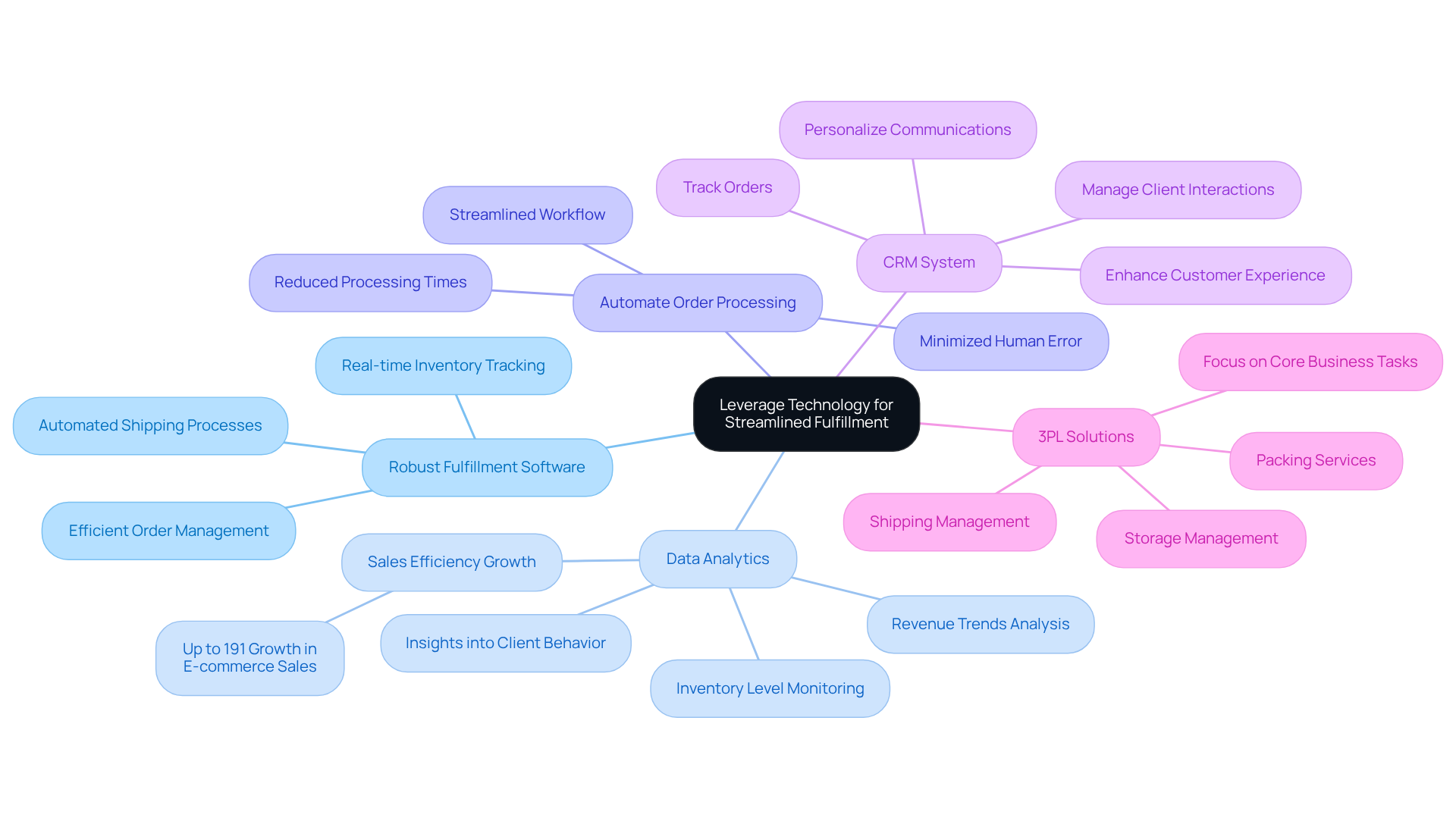
Conclusion
Mastering the East Coast wine fulfillment landscape is crucial for wineries seeking to elevate their direct-to-consumer (DTC) sales. By comprehensively understanding market dynamics, regulatory nuances, consumer preferences, and competitive positioning, wineries can establish a robust foundation for growth. This strategic approach not only ensures compliance but also aligns offerings with the evolving desires of environmentally conscious consumers, ultimately enhancing customer engagement and satisfaction.
Key insights from this analysis underscore the necessity of:
- Evaluating current fulfillment operations
- Implementing effective DTC sales strategies
- Optimizing wine club memberships
From assessing inventory management and order processing times to leveraging technology for streamlined operations, each step is vital for boosting operational efficiency and fostering customer loyalty. Furthermore, creating personalized experiences and engaging content can significantly enhance member retention, driving sustainable growth.
Reflecting on these strategies reveals the broader significance of adapting to the changing landscape of the wine industry. As consumer preferences shift and competition intensifies, wineries must embrace innovative technologies and customer-centric approaches to thrive. By prioritizing these initiatives, wineries not only cultivate loyalty among existing customers but also attract new clientele, thereby securing their position in the vibrant and evolving East Coast wine market.
Frequently Asked Questions
What is the significance of understanding the East Coast wine fulfillment landscape for wineries?
Understanding the East Coast wine fulfillment landscape helps wineries boost direct-to-consumer (DTC) sales by comprehending market dynamics, regulatory environments, consumer preferences, and the competitive landscape.
What market trends are affecting wineries on the East Coast?
The East Coast has seen a rise in beverage production, particularly in states like Virginia and New York. There is an increasing interest in sustainable and organic beverages, with organic beverage sales rising by 2.6% in 2024.
How do state regulations impact wine shipping and sales?
Each state has its own laws regarding wine shipping and sales, including licensing requirements and shipping restrictions. Wineries must investigate these regulations to ensure compliance and smooth operations.
What consumer preferences should wineries consider on the East Coast?
Wineries should analyze their target market demographics, noting that East Coast consumers often prefer local beverages and unique varietals. For example, 60% of multicultural consumers aged 20 to 40 prefer organic, green, or certified sustainable wines.
How can wineries gain a competitive edge in the East Coast market?
Wineries can identify their competitors' strengths and weaknesses and adopt sustainable practices to resonate with environmentally conscious consumers. Programs like the New York Sustainable Winegrowing initiative promote responsible wine production.
What steps can wineries take to evaluate their current fulfillment operations?
Wineries should assess inventory management, analyze order processing times, evaluate shipping partners, collect client feedback, and benchmark against competitors to optimize their fulfillment operations.
Why is effective order processing important for wineries?
Effective order processing is essential for east coast wine fulfillment as transportation constitutes around 70% of supply chain expenses in the beverage sector. Streamlined operations can enhance customer experience and loyalty.
How can wineries improve client satisfaction regarding fulfillment?
Wineries can improve client satisfaction by reviewing shipping partner performance, expanding shipping choices, and actively seeking client feedback to inform targeted improvements.
What is the importance of benchmarking against competitors?
Benchmarking against successful competitors allows wineries to identify best practices that can enhance their fulfillment processes, positioning them for success in the evolving wine industry.




